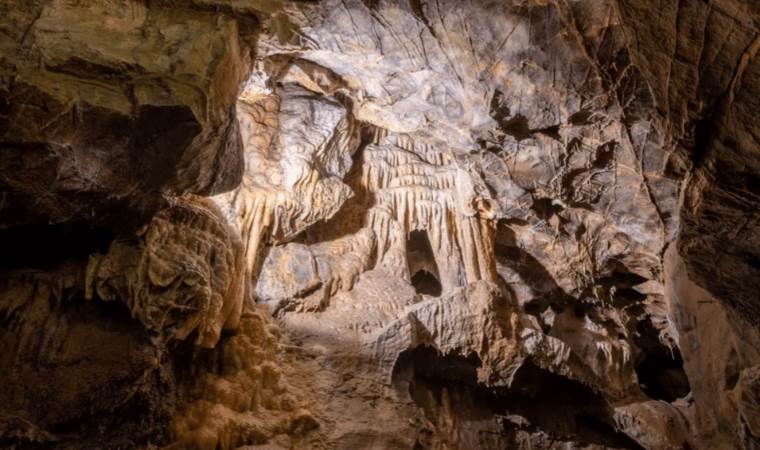Gough’s Cave: Unraveling ancient cannibalism
Nestled in Somerset, England, Gough’s Cave harbors a mystery from our prehistoric past: signs of human cannibalism.

Carved by nature around 500,000 years ago, this limestone cavern sits within the majestic Cheddar Gorge, part of the Mendip Hills near Bristol. Amidst its natural wonders, including vast chambers and striking rock formations, flows the Cheddar Yeo, Britain’s largest subterranean river.
But beneath its surface lies evidence of human habitation dating back approximately 14,700 years—a chapter in our history that is both fascinating and unsettling.
Within Gough’s Cave, archaeologists unearthed the remains of several individuals, including two teenagers and a child aged around 3. Their bones bear telltale signs of cannibalism. Dr. Silvia Bello of the Natural History Museum in London remarks, "The evidence at Gough's Cave points to a sophisticated culture of butchering and carving human remains."
These bones show signs of human gnawing, suggesting a practice beyond mere sustenance. Long bones and ribs were fractured to access marrow and grease, while cut marks indicate the removal of soft tissue. Some skulls were fashioned into crude vessels, offering a glimpse into ancient rituals.
Yet, what's perhaps most intriguing is the absence of pre-mortem violence on the remains. Despite their grisly fate, there are no indications of conflict leading to their demise. So, what drove this behavior?
Cannibalism: A Duality of Cruelty and Compassion
Two theories emerge. First, this could represent the dark side of human history—a barbaric act driven by necessity or ritual. However, another perspective suggests a more nuanced narrative—a compassionate act born from dire circumstances.
Cannibalism remains a challenging topic, often depicted in pop culture as synonymous with horror and depravity. Yet, throughout history, it has been a common practice driven by survival, religious beliefs, and funeral rites.
The individuals from Gough’s Cave lived during the last Ice Age, a time of hardship. While starvation may have driven some to cannibalism, the presence of animal bones suggests food was not scarce. Furthermore, the meticulous preparation of skulls into vessels hints at a deeper significance.
Similar practices, such as skull modification, have been observed in other cultures, including the Vikings and Scythians. However, the skulls from Gough's Cave represent some of the earliest examples discovered.
"The scrupulous cleaning and shaping of the skulls suggest they held symbolic importance," explains Dr. Bello. Likewise, the engraved forearm bone found in the cave hints at hidden meanings within these rituals.
For Dr. Bello and her team, these findings shed light on ancient customs and beliefs. "The sequence of bone modifications suggests a symbolic significance to the engraving, integral to the cannibalistic ritual," she concludes.
Most Read News
-
 Israeli prime minister departs for US to meet Trump
Israeli prime minister departs for US to meet Trump
-
 Powerful winter storm hits US Midwest and Great Lakes
Powerful winter storm hits US Midwest and Great Lakes
-
 Zelenskyy says Ukraine wants 30-50-year security guarant
Zelenskyy says Ukraine wants 30-50-year security guarant
-
 Türkiye says 6 ISIS terrorists killed in counterterroris
Türkiye says 6 ISIS terrorists killed in counterterroris
-
 Czech government to audit contract for F-35 fighter jets
Czech government to audit contract for F-35 fighter jets
-
 At least 13 dead, 98 injured after train derails in sout
At least 13 dead, 98 injured after train derails in sout
-
 Russia agrees with Trump's assessment that peace in Ukra
Russia agrees with Trump's assessment that peace in Ukra
-
 Kosovo’s ruling party takes lead in snap election
Kosovo’s ruling party takes lead in snap election








